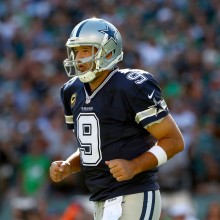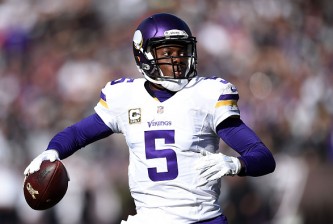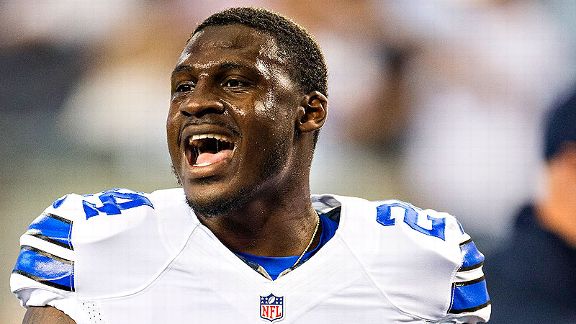In the fast-paced, reactionary world we live in, the NFL Draft is not immune to the immediate grades, projections and implications. While those immediate notes about a draft class can be telling in terms of value gotten each round, trade impacts and where team’s valued needs and scheme fits, the actual “grade” of a draft class or each individual rookie shouldn’t come until they have ample time to develop in the NFL.
“Ample time” is generally perceived as three years for players to transition to the college level to the NFL. Even for players who burst onto the scene as rookies, they usually don’t begin showing true signs of their potential until year three rolls. And by year three, teams have enough evidence to decide if these former draft picks are worth holding on to and developing, or replacing with newer young players.
In the case of Morris Claiborne, it’ll be hard to argue against the Cowboys performing the latter. After trading up in the first round by sacrificing a second-round pick, Dallas moved up to 6th in the draft to secure Claiborne, seeming to be the answer to their persistent defensive woes.
After another brutal week as the starter for Dallas against the Rams, Claiborne was told he was benched Tuesday afternoon from the starting cornerback job. He proceeded to leave the team facility in anger, only to return the next day. While the reason behind his leaving the team for a full day is still unclear, it likely is the fact that Claiborne frustrated that the Cowboys are frustrated with his performance.
The former sixth overall pick allowed five catches for 105 yards on seven targets against the St. Louis Rams, a team that’s severely lacking in pass-game offensive talent. He also let up a defensive holding call and two touchdowns, one of which was a very poorly played route, both positioning and timing-wise, on Brian Quick, who finished the catch for a touchdown.
There’s little doubt that Claiborne hasn’t proven to be worth the sixth overall pick. For all his talent at LSU, he simply hasn’t earned to be in the same class as fellow top-10 picks Andrew Luck, Matt Kalil or Luke Kuechly of the class.
But for a prospect with so much talent and excitement coming out of college, is there still a chance that Claiborne’s potential can be reclaimed, either in Big D or elsewhere in the NFL?
It certainly won’t be an easy task for Claiborne, the Cowboys or another team to do, but there are some things going for Claiborne and his future as an NFL starter.
For one, I’m a firm believer in the notion that talent doesn’t go away; it seemly ceases to be developed or inhabited correctly. In Claiborne’s case, there was little doubt that he was worth a top-10 pick coming out of LSU. With great arm extension, hip fluidity, ball skills and smoothness to his game in man coverage, he had teams like Miami, Carolina and Buffalo all likely suitors for his talent. While he hasn’t been able to make the most of that talent in Dallas, he hasn’t shown that character or lack of effort are to blame. He’s fought through a previous benching to earn his role as the starter back, and he’s never griped publicly and with detail about the Cowboys organization. He’s also never had an off-the-field problem while in Dallas.
Another reason that all hope isn’t loss on Morris Claiborne is that he really hasn’t been playing in a defensive system that’s conducive to his skill set or prior experience. At LSU, he was allowed to play much more man coverage and trust his feeling of the receiver more-so than be limited in a zone defense that clearly hasn’t suited him well. His ability to use length well and fluidity hasn’t been able to used to its full extent, and after two years in the zone-based defense, he’s still struggling with leverage, timing on his breaks and how to play receivers based on his Cover 2, 3 or 4 responsibilities. If he were to get a chance in a man scheme (if the Dallas defensive staff doesn’t return next year or if he’s able to move onto another team), he could quickly regain his college flashes.
Finally, a change of scenery could be all that’s needed for the 24 year old, who will be 25 by next football season. He’s due around $2.6 million next year, the final year of his rookie deal. While it’s not for certain, I’m sure the Cowboys would consider trading or even releasing the cornerback if he can’t continue to make strides. We’ve seen fellow young cornerbacks like Vontae Davis and Aqib Talib make strides as cornerbacks on their second teams, and Claiborne doesn’t have nearly the baggage those two did.
With the “three year rule” the golden standard for draft pick evaluation, it’s obvious the Cowboys didn’t make a great selection of Morris Claiborne. While it’s not realistic to play the “who they could have had” game because there are so many other factors at play, it’s not unrealistic that the Cowboys could have gotten Michael Brokers and Casey Hayward with their two picks as opposed to just Claiborne.
However, while the Cowboys (cough Jerry Jones cough) should learn from their mistakes on Morris Claiborne, it’d be naïve for the rest of the NFL to dismiss the 24-year-old struggling cornerback so soon. Claiborne will get another chance in the NFL, whether it’s this year or next in Dallas, via trade or when he’s released/not resigned by the Cowboys.
Claiborne still has talent left in the tank. Hopefully the Cowboys or another team can work him through his struggles and begin to nurture the high-upside he wowed with as a top-10 pick out of LSU.























